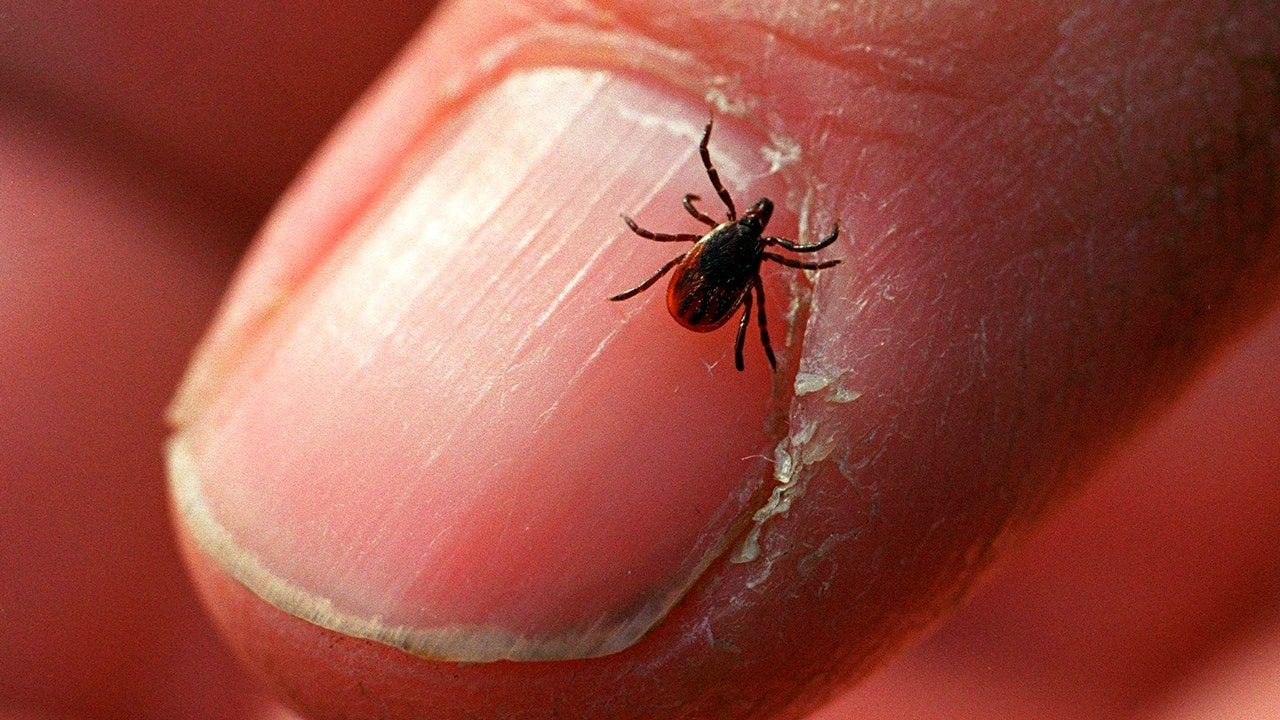Health
HIV infections have dropped in recent years, CDC says, but agency calls for greater equity

HIV cases have been on the decline in recent years, largely driven by fewer cases among young people, a report from the Centers for Disease Control and Prevention (CDC) found.
Estimated yearly infections were 12% lower in 2021 (32,100 cases) compared to 2017 (36,500 cases), according to the data, released on Tuesday of this week.
The biggest drop was among those ages 13 to 24, who had a 34% decrease in new infections (6,100 in 2021, down from 9,300 in 2017).
NEW FDA BLOOD DONATION GUIDELINES EASE RESTRICTIONS FOR GAY AND BISEXUAL MEN
This decline was primarily seen in gay and bisexual males, which make up 80% of the HIV infections in that age range, the CDC noted. That group marked 4,900 infections in 2021, down from 7,400 in 2017.
CDC recognizes progress, calls for more efforts
“Our nation’s HIV prevention efforts continue to move in the right direction,” said Rochelle P. Walensky, M.D., director of the CDC in Washington, D.C., in a statement on the agency’s website.
HIV cases have been on the decline in recent years, largely driven by fewer cases among young people, per CDC data. (iStock)
“Longstanding factors, such as systemic inequities, social and economic marginalization, and residential segregation, however, stand between highly effective HIV treatment and prevention and people who could benefit from them,” she went on.
“Efforts must be accelerated and strengthened for progress to reach all groups faster and equitably.”
“Decreasing HIV incidence among youth, including young gay and bisexual males, shows us what is possible.”
The CDC credits expanded access to HIV testing, treatment and pre-exposure prophylaxis (PrEP) for driving progress in preventing HIV infections in young gay and bisexual males.
(PrEP is a prescription medication that can reduce someone’s chances of getting HIV from sex or injection drug use.)
BISEXUAL WOMEN MAY FACE A HIGHER HEART DISEASE RISK, NEW RESEARCH SUGGESTS
Knowledge of HIV infections rose from 42% to 56%, while PrEP prescriptions increased from 8% to 20%.
Despite the overall progress that’s been made, that data indicates the progress has not been equitable across all groups.
“There is an increased awareness of HIV status and use of PrEP, but it isn’t across the board,” said Dr. Marc Siegel, professor of medicine at NYU Langone Medical Center and a Fox News medical contributor.

The CDC credits expanded access to HIV testing, treatment and pre-exposure prophylaxis (PrEP) for driving progress in preventing HIV infections in young gay and bisexual males. (iStock)
“Racial disparities persist, with a much higher incidence among the Black and Latino population, as does poverty and distrust of the medical establishment in minority communities,” Dr. Siegel also told Fox News Digital.
Compared to young White gay and bisexual males, the declines in HIV infections were lower among young Black and Hispanic/Latino gay and bisexual males, according to CDC data.
Among White males in the group, there was a 45% decrease in infections.
“The ignorance and stigmatization that have characterized this disease continue to stand in the way.”
The decline was 36% for Hispanic/Latino males and just 27% for Black males.
Regarding PrEP data, only 11% of the eligible Black people got prescriptions for it, compared to 21% of Hispanic/Latino people and 78% of White people.
Among the new infections in 2021, the majority affected gay and bisexual Black men and Hispanic/Latino men, followed by white men.
Even among the smaller subset of women who were infected, more than half were Black, the data showed.

PrEP is a prescription medication that can reduce someone’s chances of getting HIV from sex or injection drug use. (iStock)
Despite the overall decline, Dr. Robyn Neblett Fanfair, acting director of the CDC’s Division of HIV Prevention, said that at least three people in the U.S. still get HIV every hour — even with the prevalence of prevention and treatment options.
“These tools must reach deep into communities and be delivered faster to expand progress from some groups to all groups,” Fanfair, based in Atlanta, Georgia, said in the CDC’s statement.
CLICK HERE TO SIGN UP FOR OUR HEALTH NEWSLETTER
To accomplish this, Fanfair called for increasing the investments in HIV prevention programs, expanding the availability of self-testing and bringing HIV prevention interventions to those who are most affected by the virus.
“Decreasing HIV incidence among youth, including young gay and bisexual males, shows us what is possible,” said Dr. Jonathan Mermin, director of CDC’s National Center for HIV, Viral Hepatitis, STD, and TB Prevention, in a statement on the agency’s website.
“But ending the HIV epidemic and achieving equity requires we expand this progress to all.”
Dr. Siegel added to Fox News Digital, “HIV is containable via education, testing and PrEP, but the ignorance and stigmatization that have always characterized this disease unfortunately continue to stand in the way.”

Health
fatty15 has the essential nutrient to ease stress and well-being

Sign Up
Create a free account to access exclusive content, play games, solve puzzles, test your pop-culture knowledge and receive special offers.
Already have an account? Login
Forgot your password?
Get back to the Sign In
Use left and right arrow keys to navigate between menu items.
Use escape to exit the menu.
Health
Summer is tick season, but these tips can help you avoid the bloodsucking bugs

Tick season is starting across the U.S., and experts are warning the bloodsuckers may be as plentiful as ever.
Another mild winter and other favorable factors likely means the 2024 tick population will be equal to last year or larger, some researchers say.
“It’s very bad and has only been getting worse,” said Susanna Visser of the Centers for Disease Control and Prevention.
TICK BITES AND LYME DISEASE: WHAT TO DO IF A TICK BITES YOU OR YOUR PET
An increasing variety of ticks are pushing into new geographical areas, bringing unusual diseases. Exotic southern species like the Gulf Coast tick and the lone star tick are being detected in New York and other northern states, for example.
But the tick that experts warn of the most is a common blacklegged tick, which is found mainly in forests and spreads Lyme disease. Infection rates begin to peak in May, and U.S. health officials estimate nearly half a million Lyme disease infections happen annually.
Here’s a look at what’s expected this year and how you can protect yourself.
An adult deer tick, also known as the blacklegged tick, crawls on a fingernail at Connetquot State Park in Oakdale, New York on Dec. 27, 2011. (Bill Davis/Newsday RM via Getty Images)
TICK FACTS
Ticks are small, eight-legged bloodsucking parasites — arachnids, not insects — that feed on animals and sometimes people. Some ticks are infected with germs that can cause illness, and they spread those germs when they bite.
There is no widely accepted estimate of how many ticks there are from one year to the next, but there is a scientific consensus that they are an increasingly common health hazard in large portions of the United States.
Blacklegged ticks — also known as deer ticks, since they feed on deer — are among the most common ticks in the eastern half of the U.S. They were plentiful centuries ago, then diminished when forests were cut down and deer were hunted, and rebounded alongside deer and wooded suburbs. The ticks have spread out from pockets in New England and the Midwest over a wider range.
Tick populations cycle throughout the year and their numbers depend on a few factors. They like warm, humid weather, and more can be seen after a mild winter. The more deer and mice available to feed matters, too.
Overall, the blacklegged tick population has been expanding for at least four decades, researchers say.
“This is an epidemic in slow motion,” said Rebecca Eisen, a CDC research biologist and tick expert.
2024 TICK SEASON FORECAST
Weather can play a role in the severity of a tick season.
Very cold, dry winters can whittle down tick populations, but recent winters have been mild — a trend some attribute to climate change.
As Scott Williams, a tick researcher at the Connecticut Agricultural Experiment Station, said: “Winters are no longer limiting the tick population.”
Ticks can withstand the heat but tend to almost hibernate when it’s a dry summer. That happened in Maine in 2020 through 2022, said Chuck Lubelczyk, a vector ecologist at the MaineHealth Institute for Research.
But last year was a very wet year, and tick activity multiplied in Maine — the state with the highest incidence of Lyme disease in the country. Weather service predictions call for higher temperatures and precipitation, so “on paper, at least, it could be a very good year for the ticks,” Lubelczyk said.
In Wisconsin, adult ticks were out longer than usual due to a mild winter. The tick nymphs are starting to emerge, and a wet spring is setting the stage for the possibility that the population will be robust, said Xia Lee, an entomologist at the Wisconsin Department of Health Services.
Ditto New York.
“It will be as bad as last year, or worse,” said Saravanan Thangamani, who studies ticks and tickborne diseases at SUNY Upstate Medical University in Syracuse.
WHAT IS LYME DISEASE?
Not all ticks are infected with disease-causing germs — about 20% to 30% of the blacklegged tick nymphs that emerge in the Northeast and Midwest this spring and into summer will be carrying the bacteria that causes Lyme disease, experts estimate.
Lyme disease symptoms tend to start between three and 30 days after a bite occurs and can include fever, headache, fatigue and a bull’s-eye-like rash. If you get bitten and develop symptoms, see a doctor to get treated with antibiotics.
HOW TO KEEP TICKS OFF OF YOU
Experts say the best thing to do is take steps to avoid a tick bite in the first place.
If you go outdoors, make note of wooded areas and where grassy properties start bleeding into wooded areas. Ticks tend to perch on ankle-level vegetation with their upper legs outstretched, waiting to latch on to an unsuspecting dog or human.
Try to walk in the middle of paths, wear light-colored and permethrin-treated clothing and use Environmental Protection Agency (EPA)-registered insect repellents.
HOW TO CHECK FOR TICKS
When you come inside, check for ticks. They can be found anywhere on the human body, but common spots include around the waist, behind the knees, between fingers and toes, on underarms, in the belly button and around the neck or hairline.
They are harder to see when they are young, so look carefully and immediately pull them off with tweezers.
The CDC does not recommend sending individual ticks to testing services for analysis, because a person might get more than one tick bite and the results from the tested tick may not be sufficient information.
Health
Pizza for Weight Loss? Top MD Says This Dough Makes It Possible

Sign Up
Create a free account to access exclusive content, play games, solve puzzles, test your pop-culture knowledge and receive special offers.
Already have an account? Login
Forgot your password?
Get back to the Sign In
Use left and right arrow keys to navigate between menu items.
Use escape to exit the menu.
-

 World1 week ago
World1 week agoPentagon chief confirms US pause on weapons shipment to Israel
-

 Politics1 week ago
Politics1 week agoRFK Jr said a worm ate part of his brain and died in his head
-

 Politics1 week ago
Politics1 week agoOhio AG defends letter warning 'woke' masked anti-Israel protesters they face prison time: 'We have a society'
-

 News1 week ago
News1 week agoNine Things We Learned From TikTok’s Lawsuit Against The US Government
-

 Politics1 week ago
Politics1 week agoBiden’s decision to pull Israel weapons shipment kept quiet until after Holocaust remembrance address: report
-

 Education1 week ago
Education1 week agoVideo: Police Use Pepper Spray on Protesters on G.W.U.’s Campus
-

 World1 week ago
World1 week agoA look at Chinese investment within Hungary
-

 News1 week ago
News1 week agoThe Major Supreme Court Cases of 2024

![Pietro Beccari: ‘There is no household in the world that doesn’t have [contact with] Louis Vuitton’](https://www.ft.com/__origami/service/image/v2/images/raw/https%3A%2F%2Fwww.ft.com%2F__origami%2Fservice%2Fimage%2Fv2%2Fimages%2Fraw%2Fhttps%253A%252F%252Fd1e00ek4ebabms.cloudfront.net%252Fproduction%252Fb68a5c6a-f6ef-40c7-8c6c-ce8d9b288cee.jpg%3Fsource%3Dnext-article%26fit%3Dscale-down%26quality%3Dhighest%26width%3D700%26dpr%3D1?source=next-opengraph&fit=scale-down&width=900)













